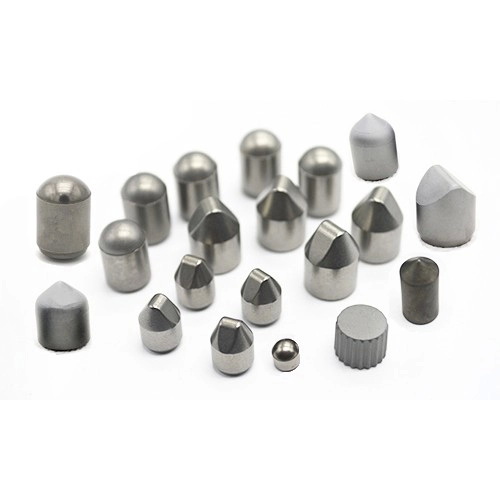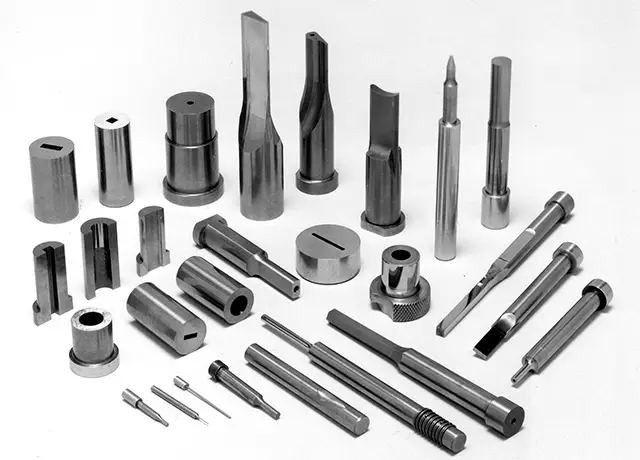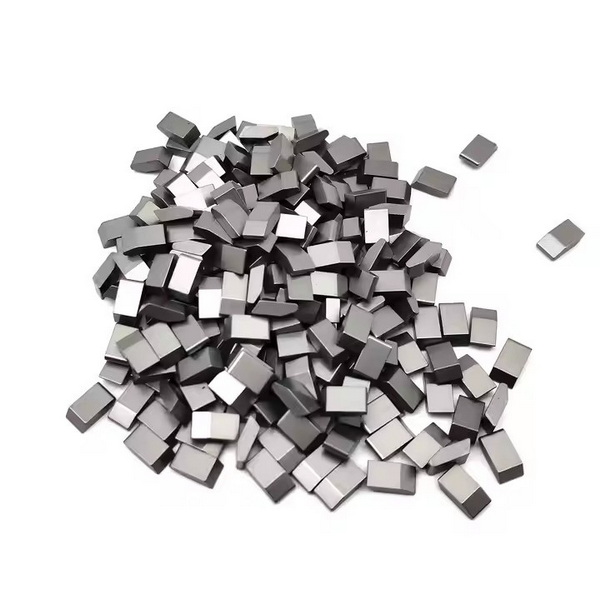Content Menu
● Introduction to Tungsten Carbide
● The Chemistry Behind WC
>> Atomic Structure and Chemical Formula
>> Formation and Synthesis
● Key Properties of Tungsten Carbide
>> Extreme Hardness
>> High Density
>> High Melting Point
>> Excellent Wear and Abrasion Resistance
>> Thermal Stability
>> Corrosion Resistance
>> Electrical and Thermal Conductivity
● Manufacturing Process of WC
>> Powder Metallurgy
>> Use of Binders
>> Advanced Manufacturing Techniques
● Applications Across Industries
>> Cutting Tools
>> Mining and Drilling
>> Wear Parts
>> Aerospace and Automotive
>> Medical Tools
>> Jewelry
>> Consumer Electronics
● Tungsten Carbide in Everyday Life
● The History and Evolution of Tungsten Carbide
>> Early Discoveries
>> Industrial Revolution and Beyond
>> Modern Innovations
● Comparing Tungsten Carbide to Other Materials
>> WC vs. Steel
>> WC vs. Diamond
>> WC vs. Ceramics
● Advantages and Limitations
>> Advantages
>> Limitations
● Environmental and Economic Impact
>> Recycling and Sustainability
>> Economic Value
● The Future of Tungsten Carbide
● Conclusion
● FAQ: Frequently Asked Questions
>> 1. What is tungsten carbide and what does WC stand for?
>> 2. How is tungsten carbide different from regular steel?
>> 3. What are the main uses of tungsten carbide?
>> 4. Can tungsten carbide be recycled?
>> 5. Why is tungsten carbide preferred for high-speed machining?
Tungsten carbide, commonly known as WC, is a material that has fundamentally transformed modern manufacturing, engineering, and even aspects of our daily lives. Renowned for its extreme hardness, durability, and versatility, tungsten carbide is at the heart of numerous industrial processes and consumer products. But what exactly is tungsten carbide? Why is it so valuable, and how does it impact industries and individuals worldwide? This comprehensive guide will answer these questions and more, delving into the chemistry, properties, production, applications, and future of this extraordinary material.

Introduction to Tungsten Carbide
Tungsten carbide is a chemical compound made from tungsten and carbon. It is not just a single material, but a family of materials with varying compositions and structures, all sharing the core characteristic of exceptional hardness. In its most common form, tungsten carbide is produced as a fine gray powder, which can be pressed and shaped into a variety of forms for different uses.
Tungsten carbide's significance lies in its ability to maintain its strength and sharpness under the most demanding conditions. Whether it's cutting through metal, drilling deep into the earth, or withstanding the rigors of daily wear, WC stands out as one of the most robust materials available.
The Chemistry Behind WC
Atomic Structure and Chemical Formula
At the atomic level, tungsten carbide consists of one tungsten atom and one carbon atom, bonded together in a dense, hexagonal crystal structure. This structure is responsible for its remarkable hardness and stability. The chemical formula, WC, is a direct representation of its composition.
Formation and Synthesis
Tungsten carbide is typically produced by mixing finely powdered tungsten and carbon, then heating the mixture to extremely high temperatures (usually between 1,400°C and 1,600°C). This process, known as carburization, causes the tungsten and carbon atoms to bond, forming a dense, hard compound.
There are several variations of tungsten carbide, including:
- Monocarbide (WC): The most common and widely used form.
- Ditungsten carbide (W2C): Less common, with slightly different properties.
The precise control of temperature, pressure, and composition during synthesis allows manufacturers to tailor the properties of tungsten carbide for specific applications.
Key Properties of Tungsten Carbide
Tungsten carbide's global popularity stems from its unique combination of physical and chemical properties:
Extreme Hardness
WC ranks about 9 on the Mohs scale of mineral hardness, just below diamond. This makes it one of the hardest materials known, capable of cutting, grinding, and shaping nearly any other material.
High Density
Tungsten carbide is extremely dense, with a density of around 15.6 g/cm³. This density gives WC products a substantial, high-quality feel and contributes to their stability and durability.
High Melting Point
With a melting point of approximately 2,870°C, tungsten carbide can withstand extreme temperatures without losing its structural integrity. This property is essential for applications involving intense heat, such as metal cutting and aerospace engineering.
Excellent Wear and Abrasion Resistance
WC's ability to resist wear and abrasion is legendary. It maintains its sharpness and surface finish even after prolonged use in harsh environments, making it ideal for tools and components that experience constant friction.
Thermal Stability
Tungsten carbide retains its hardness and strength even at elevated temperatures, which is crucial for high-speed machining and other demanding industrial processes.
Corrosion Resistance
WC is highly resistant to most acids, alkalis, and corrosive environments, except for some aggressive mixtures like hydrofluoric and nitric acid. This resistance extends the lifespan of WC products in challenging chemical environments.
Electrical and Thermal Conductivity
While not as conductive as pure metals, tungsten carbide does conduct electricity and heat, which can be advantageous in certain specialized applications.
Manufacturing Process of WC
Powder Metallurgy
The predominant method for producing tungsten carbide products is powder metallurgy, a process that involves:
1. Mixing: Finely powdered tungsten and carbon are thoroughly mixed, often with a metallic binder (such as cobalt or nickel) to enhance toughness.
2. Pressing: The mixture is pressed into molds to form the desired shapes, such as rods, inserts, or custom components.
3. Sintering: The pressed shapes are heated in a controlled atmosphere at temperatures just below the melting point. This fuses the particles together, creating a dense, solid material.
Use of Binders
Metallic binders, most commonly cobalt, are added to improve the toughness and workability of tungsten carbide. The resulting composite, known as cemented carbide, combines the hardness of WC with the ductility of the binder metal, making it less brittle and more suitable for demanding applications.
Advanced Manufacturing Techniques
Modern manufacturing also employs advanced techniques such as:
- Hot isostatic pressing (HIP): Applies high pressure and temperature to eliminate porosity and improve material properties.
- Additive manufacturing: Emerging 3D printing technologies are beginning to allow for the creation of complex WC components with unprecedented precision.
Applications Across Industries
Tungsten carbide's unique properties have made it indispensable in a variety of industries:
Cutting Tools
WC is the gold standard for cutting tools, including:
- Drill bits: Used for drilling through metal, stone, and concrete.
- Saw blades: Provide clean, precise cuts in wood, metal, and composites.
- Milling cutters and inserts: Essential for high-speed machining and precision manufacturing.
Mining and Drilling
In mining and oil exploration, tungsten carbide is used for:
- Drill bits: Capable of penetrating hard rock and mineral formations.
- Cutting picks: Used in continuous miners and roadheaders.
- Wear plates: Protect equipment from abrasion and impact.
Wear Parts
Many industrial components are subject to constant friction and impact. Tungsten carbide is used for:
- Nozzles: In sandblasting and spraying equipment.
- Valve seats: In high-pressure pumps and engines.
- Bearings and bushings: In heavy machinery and automotive applications.
Aerospace and Automotive
Tungsten carbide coatings and components are used to:
- Protect turbine blades: From erosion and high-temperature wear.
- Enhance engine parts: Improving efficiency and longevity.
- Manufacture precision gears: For high-performance vehicles.
Medical Tools
The medical field relies on WC for:
- Surgical instruments: Including scalpels and scissors that retain sharpness.
- Dental burs: For precise drilling and shaping of teeth.
- Orthopedic tools: That require both strength and precision.
Jewelry
Tungsten carbide has become a popular choice for:
- Rings and bracelets: Known for their scratch resistance and lasting shine.
- Watch bands: Offering both durability and a modern aesthetic.
Consumer Electronics
WC is found in:
- Smartphone components: Such as stylus tips and connectors.
- Ballpoint pen tips: Ensuring smooth, long-lasting writing performance.

Tungsten Carbide in Everyday Life
While tungsten carbide is most commonly associated with heavy industry, it also appears in many aspects of daily life:
- Jewelry: Tungsten carbide rings are increasingly chosen for their beauty and durability.
- Sports equipment: High-end ski pole tips and fishing weights use WC for added performance.
- Home improvement: Some high-quality utility knives and garden tools feature tungsten carbide blades.
The History and Evolution of Tungsten Carbide
Early Discoveries
Tungsten itself was discovered in the late 18th century, but it wasn't until the early 20th century that scientists began to explore its compounds for industrial use. The synthesis of tungsten carbide marked a major breakthrough, offering a material with hardness approaching that of diamond but with far greater toughness.
Industrial Revolution and Beyond
The widespread adoption of tungsten carbide began in the 1920s and 1930s, particularly in the manufacturing of cutting tools. Its impact was immediate and profound, enabling faster, more precise machining and revolutionizing industries from automotive to aerospace.
Modern Innovations
Today, ongoing research continues to expand the capabilities of tungsten carbide, including the development of nanostructured WC, advanced coatings, and hybrid composites that offer even greater performance.
Comparing Tungsten Carbide to Other Materials
WC vs. Steel
- Hardness: WC is much harder than steel, maintaining sharpness and resisting wear for much longer.
- Brittleness: Steel is more flexible and less likely to fracture under impact, while WC, though tough, can be brittle.
- Cost: WC is more expensive upfront but often more cost-effective over the product's lifetime due to reduced replacement needs.
WC vs. Diamond
- Hardness: Diamond is harder, but WC is tougher and less prone to chipping.
- Cost and Availability: WC is more affordable and easier to manufacture in large quantities.
WC vs. Ceramics
- Toughness: WC is generally tougher and more impact-resistant than most ceramics.
- Wear Resistance: Both materials offer excellent wear resistance, but WC's combination of hardness and toughness gives it an edge in many applications.
Advantages and Limitations
Advantages
- Long Service Life: WC products last significantly longer than those made from steel or other metals.
- Reduced Downtime: Fewer replacements and less maintenance mean increased productivity.
- Precision: The ability to maintain sharp, precise edges is crucial for high-accuracy manufacturing.
- Versatility: Suitable for a wide range of applications, from heavy industry to fine jewelry.
Limitations
- Brittleness: Despite its toughness, WC can fracture under severe impact or improper handling.
- Cost: The initial investment is higher, though often offset by long-term savings.
- Machinability: Only diamond or similar abrasives can cut or shape WC, making repairs and modifications challenging.
Environmental and Economic Impact
Recycling and Sustainability
Tungsten carbide is fully recyclable. Worn-out tools and scrap WC can be collected, processed, and reused to make new products. This not only reduces waste but also conserves valuable resources, as tungsten is a finite and strategically important element.
Economic Value
Although WC products cost more initially, their durability and performance often result in significant long-term savings for industries that depend on high-performance tools and components. The ability to recycle WC further enhances its economic and environmental value.
The Future of Tungsten Carbide
As technology advances, the demand for materials that can withstand extreme conditions continues to grow. Researchers are exploring new ways to enhance the properties of tungsten carbide, such as:
- Nanostructured WC: Offering improved strength and wear resistance at the microscopic level.
- Hybrid composites: Combining WC with other advanced materials to create components with tailored properties.
- Additive manufacturing: Allowing for the creation of complex, custom WC parts with minimal waste.
The future of tungsten carbide is bright, with ongoing innovations ensuring its continued relevance in cutting-edge industries.
Conclusion
Tungsten carbide (WC) is a cornerstone of modern industry and technology. Its unparalleled hardness, wear resistance, and versatility have made it indispensable in fields ranging from manufacturing and mining to medicine and jewelry. As new technologies and applications emerge, tungsten carbide's role is set to expand even further, cementing its status as one of the most important materials of the 21st century.

FAQ: Frequently Asked Questions
1. What is tungsten carbide and what does WC stand for?
Tungsten carbide is a compound made from equal parts tungsten and carbon atoms, forming a material known for its extreme hardness and durability. The abbreviation WC stands for "tungsten carbide," referencing its chemical formula.
2. How is tungsten carbide different from regular steel?
Tungsten carbide is much harder and more wear-resistant than steel. While steel is tough and flexible, WC maintains its sharpness and structural integrity under much harsher conditions, making it ideal for cutting tools and wear parts.
3. What are the main uses of tungsten carbide?
Tungsten carbide is used in cutting tools, mining and drilling equipment, wear-resistant parts, aerospace and automotive components, medical devices, jewelry, and even consumer electronics.
4. Can tungsten carbide be recycled?
Yes, tungsten carbide is fully recyclable. Worn or scrap WC tools can be collected, processed, and reused to make new products, helping to conserve resources and reduce environmental impact.
5. Why is tungsten carbide preferred for high-speed machining?
WC's ability to maintain hardness and sharpness at high temperatures allows it to perform exceptionally well in high-speed machining applications, resulting in faster production rates and longer tool life.
















